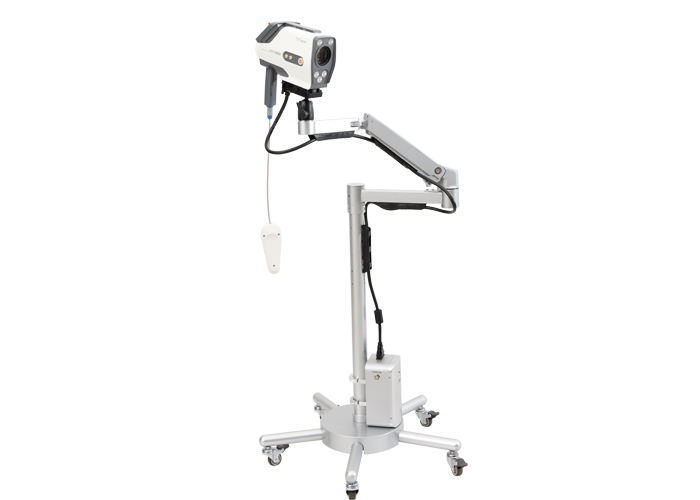Gynecological Endoscopy: Digital colposcope/Hysteroscope/Laparoscope
Colposcope
Digital colposcope is to optically magnify the fully exposed vagina and cervix by 10 to 40 times, and directly observe the vascular morphology and epithelial structure of these parts to find abnormal epithelium and abnormal blood vessels related to cancer, and perform positioning biopsy of suspicious parts to improve The diagnosis rate of cervical lesions. Mainly used for auxiliary diagnosis and evaluation of vulvar, vagina, cervical intraepithelial lesions, early cervical cancer and other early lesions of the lower reproductive tract.
Indications for colposcopy include those with vulvar and vaginal lesions, those with the scope of lesions determined before cervical conization, those with suspicious cervical malignant transformation, contact bleeding, those with no obvious lesions in the cervix by naked eyes, and those with Pap grade II or above in cervical exfoliation cytology. In case, re-evaluation and re-examination after the treatment of cervical lesions;
Hysteroscope
Hysteroscopy can be used for diagnosis, treatment and follow-up of intrauterine lesions. Hysteroscopic surgery alone has no wounds. It uses an instrument with a micro-camera to enter the uterine cavity through the cervix through the vagina to directly observe the location, size, appearance and scope of the lesion in the uterine cavity, and to determine the tissue structure on the surface of the lesion. Carry out careful observation, and take the material or locate the curettage under direct vision. Gynecological diseases that can be diagnosed and treated include: endometrial polyps, intrauterine foreign bodies, submucosal uterine fibroids, intrauterine adhesions, uterine mediastinum, infertility, etc., with good curative effect, less pain and quick recovery.
Hysteroscopy: cervical leiomyoma, endometrial stromal sarcoma, endometrial polyps, endometriosis, dysfunctional uterine bleeding, uterine fibroids, intrauterine adhesions, uterine mediastinum, Family planning, infertility (fallopian tube dredging, intervention), etc.
Laparoscope
Laparoscope surgery is an operation performed using a laparoscope and related equipment: cold light source is used to provide illumination, a laparoscope lens (3-10mm in diameter) is inserted into the abdominal cavity, and digital camera technology is used to display the images taken by the laparoscope lens in real time On the endoscope monitor. Then the doctor analyzes and judges the patient's condition through the images of the patient's organs from different angles displayed on the monitor screen, and uses special laparoscopic instruments to perform operations.
Laparoscopy is suitable for: hysterectomy, ovarian cystectomy, ectopic pregnancy surgery, acute appendicitis, gallbladderjejunostomy, hepatobiliary surgery, splenopancreatic disease surgery, gastrointestinal surgery, urinary system disease surgery, salpingostomy, inguinal hernia repair Surgery, pelvic adhesion decomposition surgery, infertility diagnosis of the cause at the same time as pelvic adhesion decomposition and fallopian tube plastic surgery, etc.;
The difference between the three:
Colposcopy is an imaging technology, it is used to detect cervical epithelial cells, so it is necessary to judge the degree of disease of the patient according to different compositions, which can improve the accuracy of diagnosis; hysteroscopy is a technique of gynecological treatment and is minimally invasive Yes, the endoscope is mainly used for inspection and treatment in the uterine cavity, so it can see the situation in the uterine cavity intuitively and accurately. It is mainly used for the inspection method of bleeding diseases and intrauterine lesions; laparoscopy The pelvic tissue structure and the appearance of ovarian tumors can be clearly observed, which is of great significance for the diagnosis and treatment of ovarian diseases. Especially when deciding what kind of surgery to perform on the ovaries, such as tumor removal, ovariectomy or preservation of the ovaries, it is very important to judge the nature of the tumor. They all belong to the minimally invasive endoscopic light source inspection, but the significance of the inspection is different.
